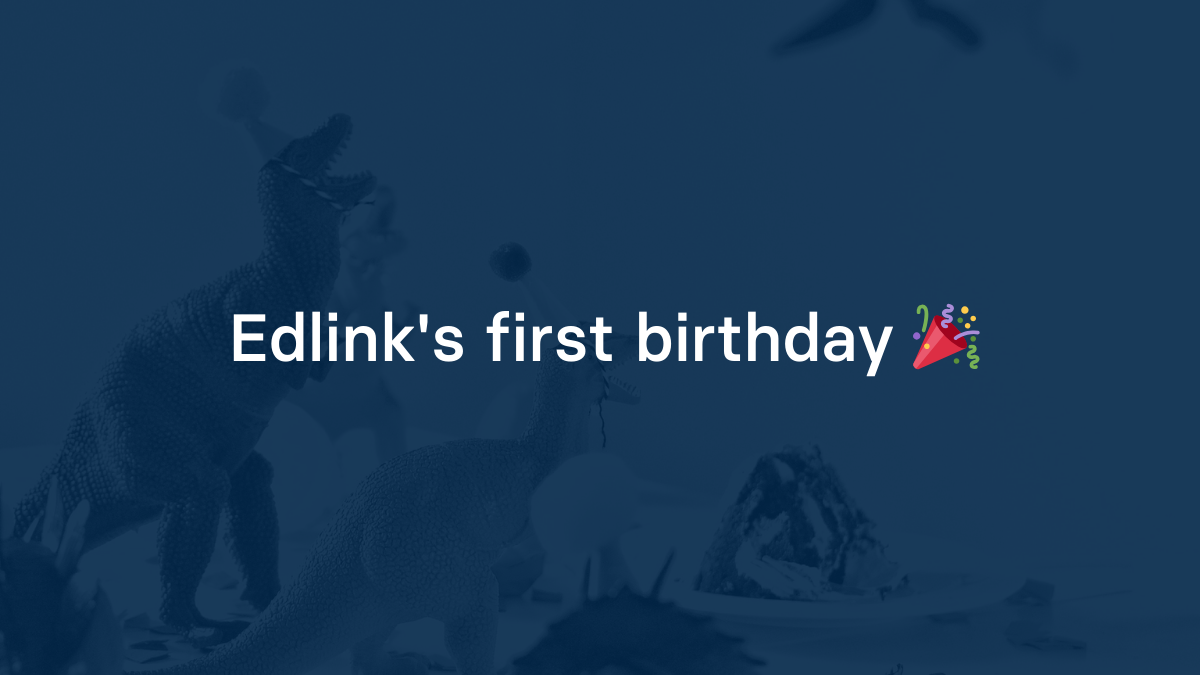This year has certainly been an interesting time in human history. Its hallmark: challenge. Our hearts go out to those affected by COVID - especially those who have lost loved ones or had their life's work unraveled in a matter of weeks. Billions of people whose daily lives were upended, who struggled to acclimate, and who found a path through the mess to support themselves, and their families. 2021 brings light at the end of the tunnel. A hope that things may return to the way they were, whatever that means. A promise to reconnect with family, community, and the activities that make life worth living.
The challenges faced by educators have been nothing less than monumental. COVID forced upon teachers, students, parents, administrators, and companies one of the largest institutional shifts in human history. Hundreds of millions of people around the world affected all at once, in a matter of weeks.
Even those on the receiving end of this transition - companies and organizations who provide the world with online learning tools & curriculum - quickly found themselves underwater. They struggled for months to keep their products online, buckling under the load of 10, or 100-fold increases in usage. They struggled with the onslaught of millions of new users, many of whom were adopting digital products in their classroom for the first time.
In this piece, we look back on the struggles and triumphs of Edlink's first year.
Out of the Frying Pan
In late February, we connected our first real school district to Edlink - a small district in rural Maine. We were elated. It was the culmination of months of planning and development, dozens of technical conversations with potential partners, and plain hard-work.
Two weeks later, we watched as Steve Adler canceled South By Southwest, the annual festival in our hometown of Austin, Texas. At first, we were in disbelief - SXSW is a major affair for the city - its cancellation, unprecedented. Over the next few weeks, our world changed. Suddenly, millions of small businesses shuttered, schools closed, and billions of people around the world were locked at home, to make do with what they had.
We went into survival mode. We faced a problem common amongst technology companies: usage spiked overnight, but revenue did not. To make matters worse, many companies had to furlough employees, and there was great uncertainty about paying bills. We were doing our best to support our partners; they were doing their best to support teachers, students, and parents.
Into the Fire
Admittedly, the past 12 months have been somewhat of a blur. The 2020 school year ended, but that was when the real work began. For schools and companies alike, 12 weeks of intense change had to be distilled down into 8 weeks of creative engineering. Like our peers, we found ourselves working around the clock.
August was the worst of it. Many of our new partners rolled out their new and improved products to schools for the first time. Nobody could be fully prepared. We found ourselves onboarding hundreds of districts in a matter of weeks. Answering thousands of support tickets. And we weren't even on the front lines, so to speak.
What We Accomplished in Our First 12 Months
We're very proud of what we have been able to accomplish during our first year. Both qualitatively and quantitatively, our team has exceeded all expectations, and we're excited to see what's in store for the future.
Changing the Way People Think About Integration
We firmly believe that there is a tremendous amount of value to be created for teachers, students, and administrators by properly connecting the various systems that power our lives. However, there is a fundamental limitation to this: most platforms don't conform to a standard way of representing information.
Despite a number of efforts over the years to standardize, there remains a great variety of different methods of communication between educational platforms. All too often, users resort to passing around CSVs, or simply become accustomed to working in isolated environments.
So why is it that after decades and thousands of hours, we aren't able to consolidate around a single method of communication? We have a number of theories:
- Often times, platforms' unique data structure is their selling proposition (e.g. "Our platform is better than other platforms because we do it this way).
- There are thousands of different ways to represent users, content, and grades. Once you've settled on one method in an early iteration of your product, it can be very challenging to build compatibility with open standards.
- Often times, platforms implement standards only partially (or even entirely incorrectly) and it can be a full-time job managing integrations that are supposed to be standard.
We are trying to push the envelope with what our integrations can do. And this means choosing the best method of integration for our end-user experience - not what will take the least amount of work. This comes at a cost though; we spend a lot of time teaching people about how our technology works.
Hopefully, this change in mindset - from what integration strategy is fastest to implement to what works best for teachers and students will create a positive change in the long-term trajectory of the edtech industry.
Edlink Platform Growth
One of the aspects that we're most proud of is our ability to scale to meet the demand of our partners (software vendors) and their clients (school districts). From that first school district in rural Maine, Edlink has exploded:
- We serve more than 8 million users.
- We serve nearly 1000 school districts & universities.
- We've processed millions of SSO requests.
- We process hundreds of thousands of API requests every day.
- We connect with 12 LMS providers / school data providers (and more soon).
We're also proud of the engineering milestones that we've been able to achieve:
- We've built an onboarding experience that makes it extremely easy for district admins (even non-technical ones) to set up LMS integrations with vendors.
- We've built incredible tools for company operations & support staff to manage and troubleshoot user issues.
- We've built a first-of-its-kind mechanism for schools and developers to restrict the flow of data & users between LMSs and vendor applications.
- We've been able to maintain an uptime of greater than 99.95%, despite adding more than 100,000 users per day for 60 days straight.
Our Outlook for 2021
There is no going back. Our world has changed forever. We believe that some of the long-term impacts of 2020 will be for the better. Millions of people were exposed to new technology and new ways of teaching and learning.
Our goals for 2021 are ambitious:
- We will double the number of data providers that we connect with.
- We will continue refining our onboarding so that even the most non-technical admins can get their school connected to vendors without any help.
- We will provide the resources and documentation so any developer can pick up Edlink and release a deep LMS integration in a matter of weeks.
- We will provide integration tools for district technology administrators to solve even the toughest data challenges.
- We will continue providing a high level of customer support and maintain our excellent NPS score.
As always, if you're interested in working to help us achieve our goals and change education for the better, don't hesitate to drop us a line. We don't bite.

